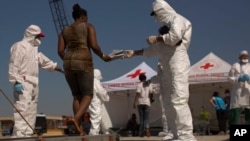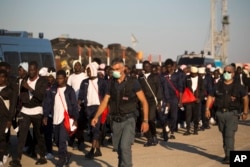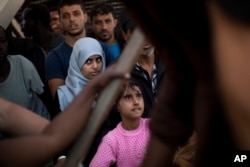Italy says the number of migrants arriving on its shores during the first half of this year rose nearly 20 percent above the levels reached by the same date in 2016.
Interior ministry officials in Rome said that, as of Monday, 85,183 migrants have landed from the Mediterranean Sea, nearly 14,000 more people than at the same time in 2016.
Many of the arriving migrants were rescued by coast guard patrol boats and other vessels after their flimsy crafts began taking on water. Another 2,000 migrants have died this year attempting to make the trip from North Africa.
Before the final migration totals were disclosed, Prime Minister Paolo Gentiloni said that unless the European Union does more to help alleviate the surge of migrants to Italy, the influx will feed "hostile reactions in our society."
Italy appeals to all of Europe
Speaking in Rome, he said: "The whole of Italy has mobilized to deal with the flows of migrants in the central Mediterranean and asks the EU for engagement, which is necessary if Europe wants to stay faithful to its own principles, own history, own civilization."
Italy threatened last week to close its ports to migrant rescue boats in order to force the vessels to go to other Mediterranean countries, and pleaded with other countries to take in the refugees. On Monday, however, refugees were still landing freely.
France, Germany and the EU's migration commissioner pledged they would give more support to Italy in handling the influx of migrants, but made no direct reference to the Italian government's appeal to other European countries to allow rescue boats to dock at their ports.
The French and German interior ministers and the EU's migration chief agreed to bolster training and funding for the coast guard in Libya, where migrants pay people-smugglers to carry them across the sea, and also to relocate asylum seekers more quickly.
Do aid groups make problem worse?
The bigger European states also said they would draw up a "code of conduct" for aid groups working in the Mediterranean, who supply boats that pick up many of the refugees unable to reach Italy unaided. Many people in Italy contend the nongovernmental aid groups are, in effect, aiding the human smugglers and allowing the trade to continue.
The U.N. refugee agency said Italy cannot continue absorbing tens of thousands of migrants, and called on European countries to show more solidarity with Rome.
"It is unrealistic to think that Italy should have the responsibility to disembark everyone," said UNHCR special envoy for the central Mediterranean Vincent Cochetel. "This is not sustainable; this is not tenable. So we need to have other countries joining Italy and sharing that responsibility."
The flood of migrants who see Italy as their main gateway to Europe and a recent stretch of good weather and calm seas has pushed the number of arriving migrants to more than 10,000 in a week. The travelers' sea voyages begin in Libya, but they originate from many places: across sub-Saharan Africa, from the Arabian Peninsula, Egypt, Syria and Bangladesh.
Migrants must declare their nationality when they arrive in Italy. Around 15 percent of all migrants this year have been from Nigeria; 12 percent are from Bangladesh, 10 percent from Guinea and 9 percent from Ivory Coast.










